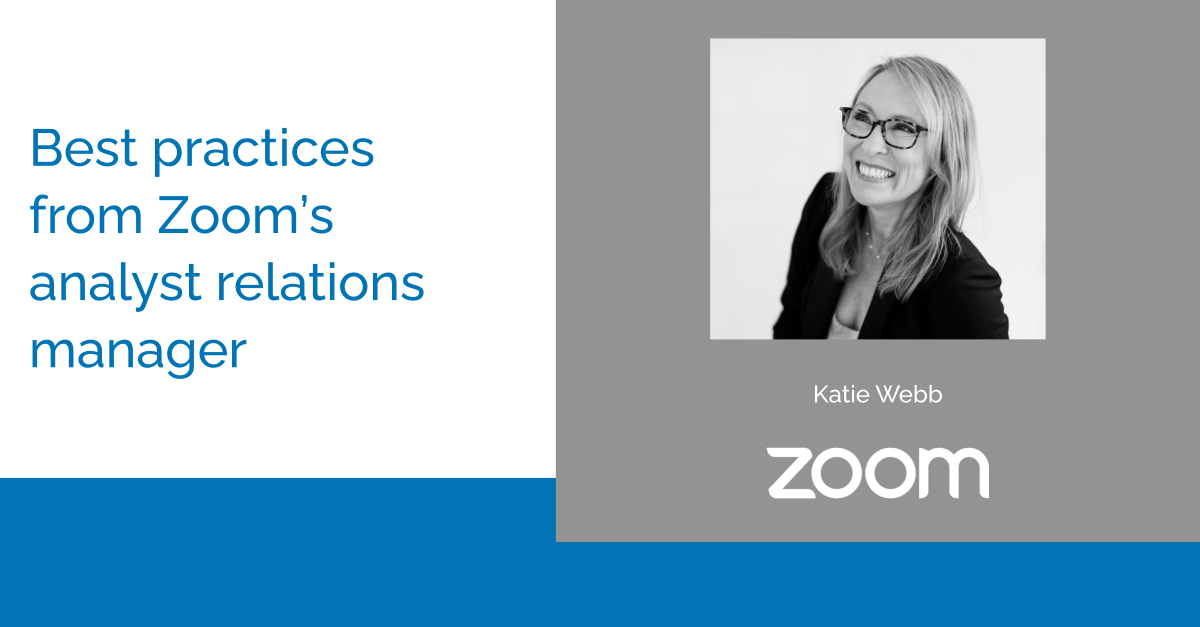Many analyst relations (AR) teams seek to communicate with numerous relevant industry analysts and influencers, who have different needs, cover different (though relevant) topics, and speak with different executives from across the business. Tracking and managing these relationships is key to building even more productive ones — directly impacting both AR and business goals.
At popular video communications platform company Zoom — a leader in the Gartner Magic QuadrantTM for Meeting Solutions for six years running (among leader placements in other markets) — the AR team has developed best practices for cultivating and tracking its ever-growing analyst relationships. It’s important to keep track, centrally, of the history of each relationship, including associated briefings, inquiries, email communications and other interactions; analyst feedback; requests; report inclusions and more.
And it’s not just managing analyst relationships that’s key to Zoom’s AR program. The AR team also needs to maintain frequent communications and coordination with internal executives and stakeholders, who both give information to — and rely on insights from — target analysts.
We were excited to connect recently with Katie Webb, who manages analyst relations at Zoom, for insights into their “well-oiled machine” of AR relationship management. Katie will be among the featured speakers at our upcoming ARchitect User Forum, being held virtually Dec. 7-8. Check out the Q&A with Katie below to learn more about Zoom’s global AR program, and how the AR team uses software to manage relationships, scale communications and measure success.
Q: Could you please briefly describe your role at Zoom?
A: I’m our APAC analyst relations manager. I work as part of Zoom’s global AR team to build deep, strong relationships with key market analysts from Gartner, Forrester, IDC and many niche firms — educating them about all things Zoom. In my role, I collaborate across product, sales and marketing teams to help grow market share and awareness through effective industry analyst interactions and engagement on a global basis.
Q: What is the mission of your AR team?
A: The mission of the Zoom AR team, and my own role (as described above), are two sides of the same coin. We seek to positively influence analyst perception of the Zoom product portfolio. In doing so, we support sales, growth targets and strategic ambitions via an AR plan that builds awareness, credibility and advocacy.
Q: What AR challenges does your organization face?
A: The challenges we face in AR are those associated with a rapidly expanding business, in a rapidly expanding segment of the market. So they’re issues of scaling/reaching out to a wider number of analysts, personalizing those interactions, and getting commitments of precious time from key stakeholders.
Q: How do you use technology to solve these challenges?
A: Having access to ARchitect and using it as our relationship management tool is key to keeping track of ever-expanding analyst groups. The software enables us to better communicate with analysts (and track and scale our communications); make information available, on-demand, to those analysts (through our ARchitect Analyst Portal); and measure our success.
Q: What is the tentative title of your User Forum presentation? What’s the single most important thing people will learn from it?
A: The title of my presentation is “How to Build Meaningful Peer-to-Peer Relationships in a Video Conferencing World.” Attendees will learn how to foster connections with analysts and internal stakeholders they haven’t (and may never) meet with face-to-face. And they’ll learn how software is critical to planning and tracking these “personal” interactions.
Want to hear more from Katie and other AR pros? Join us at ARchitect User Forum Dec. 7-8, from 9 a.m. – 12 p.m. PT each day. The virtual event is an opportunity to learn new AR strategies, listen to real-world success stories and share ideas with other AR practitioners across the globe. We hope you’ll register and join us!



